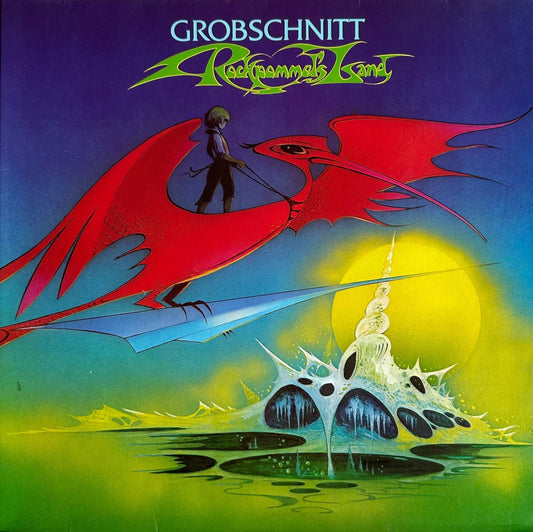It was 1963 in Birmingham, UK, when guitarist/songwriter Spencer Davis convinced Muff Winwood and his little brother Steve, only 14 years old, to join him in a band. With the brothers on bass and keyboards, they just needed a drummer; Pete York was the man for the job. They called themselves the Rhythm and Blues Quartette. But the name changed to the Spencer Davis Group in 1964, when they signed with Island Records.
Davis and his friends were part of the growing British obsession with American blues music, a musical love affair that shaped the playing of Eric Clapton, the Rolling Stones, and other artists of the so-called British Invasion. A great fan of bluesmen like Huddy Ledbetter and Big Bill Broonzy, Davis tried to pull that kind of sound from his guitar. At the same time, young Steve Winwood was already enough of a master on the Hammond C-3 organ that he accompanied folks like John Lee Hooker and Muddy Waters when they swung by Birmingham on tour.
Appropriately titled Their First LP, Spencer Davis Group’s debut came out in 1965. The 12 tracks included some originals by band members and some covers by Hooker, Joe Seneca, and even Ike Turner. Stax Records regular Rufus Thomas wrote the high-energy “Jump Back.” Maybe the most remarkable thing about this early recording is the confidence of these young musicians. They’ve made this music theirs, and they’ve clearly put in the work to be worthy of it.
On the other hand, this slow and heart-tugging Steve Winwood solo, his own composition, shows the band’s emotional side. Through the keening, warbling organ layered over a light-fingered piano line on “Here Right Now,” Winwood proves he doesn’t just admire the masters, but has absorbed some of their techniques. Brother Muff adds an expressive touch to the bassline.
The Second Album (1966) was not released in the U.S., although the single “Keep on Running” managed to break the U.S. top 100. Maybe SDG was ahead of its time, a little too soon for America to “get” the British blues thing. Winwood’s post-SDG projects brought him greater fame.
But America’s lack of response takes nothing away from the value of these albums. Here’s Curtis Mayfield’s “You Must Believe Me.” As usual, the arrangement is as tight as the vocal harmony.
The Winwood brothers stuck around for one more album, Autumn ’66 (1966). Then Steve joined the band Traffic, and Muff became an A&R rep for Island Records.
This left the band down one singer and without piano, organ, or bass. At first guitarist Phil Sawyer and keyboardist Eddie Hardin were brought in, and they quickly recorded a single, “Time Seller.” The B-side is “Don’t Want You No More,” which really lets Hardin shine on the organ. His solo around 1:42 has a jagged edge, an interesting and appealing contrast to the smoother Winwood style. At this point Davis started playing bass guitar to make up for Muff’s departure. He keeps a fine and funky beat. Sawyer is singing.
This lineup participated in making the soundtrack for a 1967 film called Here We Go Round the Mulberry Bush. (These and other rare tracks can be found on the 2016 retrospective on RPM Records, Taking Out Time: The Complete Recordings 1967-1969.) One especially nice tune from that film is “Every Little Thing,” with Sawyer providing a soulful solo at 1:29.
As of the album With Their New Face On (1968), SDG becomes a revolving door for personnel. But Sawyer wasn’t happy with the way the band had started leaning toward pop, so he bolted after recording most of this record.
The first appearance of his replacement, guitarist-singer Ray Fenwick, was on the 1967 pre-album single “Mr. Second Class,” which was later included on With Their New Face On. Its flip side, “Sanity Inspector,” has some elements that would have seemed fun to some ears and annoying to purists: electric keyboard, cute timbral additions like a triangle, and obvious trip-you-up metrical switches from duple to triple time and back (a very late-Beatles touch).
Fenwick wrote the majority of the songs on the album Funky (1969), which was only released in the US. It features Nigel Olsson is on drums for some tracks, replacing York, and Dee Murray is on bass. Legal issues prevented the record from coming out in the global market.
The track “Firefly (Funky)” finds Fenwick focusing on more jazz-fusion elements than blues or pop. The sound is so slick that it’s hard to believe this is the same band. In a way, of course, it’s not.
After the stressful legal experience of Funky, SDG officially split up; everybody went off to work on other projects. But a few years later, they were back at it to produce Gluggo (1973). Although Fenwick was still with them, this was more a rock album than a jazz/blues record. Bassist/vocalist Charlie McCracken, who’d previously worked with the band as a session musician, is brought in as a full member at this point.
Here’s a snarky rock song called “The Screw” by Hardin and Fenwick. McCracken’s presence is certainly felt in that bass-heavy mix.
Living in a Back Street (1974) was to be the last SDG album. It was produced by Deep Purple bassist Roger Glover, who gave it a pounding energy typical of his work. York’s frantically rolling drum part gives the title song something close to a Southern rock feel.
The Spencer Davis Group was quiet for a long time, but in 2006 they reunited to tour, with only Hardin and Davis himself still around from the old days, collaborating with session players. Hardin died in 2015, but Davis is still working. The most recent SDG tour was in 2017.
Although they haven’t made any new recordings since 1974, they have managed to get some of the rarer stuff out there officially, including a 2007 collection called Bootlegs and Unplugged. Always good to see a band reclaiming what’s rightfully theirs.


